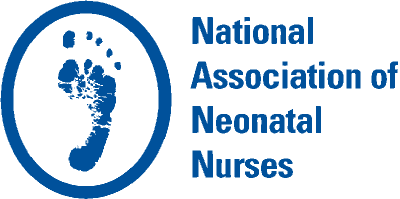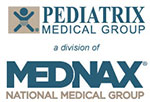NANNP Corner
The Other Epidemic
Lizz Welch-Carre, EdD MS NNP-BC APRN
NANNP Council Chair
Some of you may know that in 1999, my daughter was born. She came to our family as a foster child when she was 9 days old, and we were able to adopt her a couple of years later. Her biological mother had a long history of substance use disorder. Her primary drug of choice was and continues to be alcohol. When my daughter was approximately 4 years old, she was diagnosed with alcohol-related neurodevelopmental disorder, which today falls under the umbrella diagnosis of fetal alcohol spectrum disorder (FASD).
Over the last few years, the opiate epidemic has dominated the news. First responders carry Narcan with them at all times to deal with opiate overdoses. There is national discussion about the most appropriate and efficacious ways to provide support and treatment for individuals with opiate addiction. Efforts have been made to ensure that pregnant women get the medical care they need so they can have healthy babies. A lot of focus has been placed on finding new and more effective methods that don’t rely on medication as a first-line treatment for infants with neonatal abstinence syndrome. (Do you remember when phenobarbital was the first line of treatment?) This epidemic is real and impactful for families all over the country and around the world. However, it is not the only substance-use disorder epidemic.
Annually, there are approximately 88,000 alcohol-related deaths, 66% being males and 33% being females (Centers for Disease Control and Prevention, 2019). The National Survey on Drug Use and Health reported that 5.8% of adults 18 years and older had alcohol use disorder (AUD). This number equates to approximately 14.4 million people in the United States, of which 7.6% are men and 4.1% are women. Of those individuals with AUD, only 7.9% had received treatment in the previous year. Approximately 1.6% of teenagers ages 12 to 17 also have AUD (Substance Abuse and Mental Health Services Administration). It also is estimated that 20% of college students meet the criteria for AUD (National Institute on Alcohol Abuse and Alcoholism).
The risks of alcohol use during pregnancy have been known since the 1950s. In 1957, a pediatric doctoral student, Jacqueline Roquette, wrote a dissertation about the physical and psychological implications of fetal alcohol exposure. In 1968, Paul Lemoine, a pediatrician in France, published his findings about congenital abnormalities from a longitudinal study of 127 children affected by fetal alcohol exposure. Then, in 1973, the diagnostic criteria for fetal alcohol syndrome (FAS) began to be defined by Drs. Kenneth Jones and David Smith, dysmorphologists from Washington state (Klaman, Andrigna, Horton, & Jones, 2019).
In spite of all this knowledge and the warning labels on alcohol, women continue to drink alcohol while they are pregnant. A question on the Behavioral Risk Factor Surveillance System asked pregnant women about alcohol use in the previous 30 days. Data from 2015 to 2017 showed that 11.9% reported having at least one alcohol beverage in the last 30 days; 3.9% of pregnant women reported binge drinking on average 4.5 times over the previous 30 days. In the binge drinking group, the average number of drinks consumed at any one time was six.
Alcohol use during pregnancy can cause FAS and FASD. Prenatal alcohol exposure is the leading cause of preventable neurodevelopmental and cognitive delays (Williams, Smith, & Abuse, 2015). Current data suggest that FASD rates in the United States could be has high as 20 to 50 cases per 1,000, depending on the population being assessed (National Institute on Alcohol Abuse and Alcoholism). North Dakota estimates that the cost of each new case of FASD is $23,000 (North Dakota Fetal Alcohol Syndrome Center, 2019). There is not only a financial cost; there is also a cost to families. Families raising children with FASD have significant stress. Studies on caregivers of indiviuals with FASD have shown that quality of life can be impacted by the behavioral and cognitive challenges of a person with FASD. Of note, families in which the individual with FASD had the facial features of the disorder reported having higher quality of life. This may be because others can recognize that the individual has a disablity (Reid & Moritz, 2019). Some individuals with FASD will never be able to live on their own and require an “external brain” (a caregiver) to keep them on track (Cunningham, 2020).
So why should this matter to NNPs? First, we are able to review maternal history to note if there are any indications that a mother may have a substance use disorder (Leonardson & Loudenburg, 2003; Currie, Sanders, Swanepoel, & Davies, 2020). These indications include
- history of mental health diagnosis
- history of substance use disorder
- history of emotional, physical, or sexual abuse
- living with someone with a substance use disorder
- history of substance use in the family.
Based on our findings, we can recommend that a social worker or other behavioral specialist become a part of the care team. Second, the earlier an individual is diagnosed with FASD, the sooner the individual will have access to services. In the best scenario, an infant would receive early intervention services because early intervention can make a difference in the long-term outcome for individuals with FASD (Centers for Disease Control and Prevention, 2017).
Many of us are uncomfortable having discussions about subtance use disorder. However, having knowledge about whether or not a fetus was exposed to drugs or alcohol is as important as knowing the risk of neonatal sepsis or if one is attending the delivery of a 24-weeker. All of these variables can have long-term implications in the life of the infant. Mothers may struggle to be honest about their usage for fear of being judged or that their child might be taken away. As NNPs, we can control our judgment, but we cannot control what social services might do with information about maternal substance use. However, we can share with mothers, parents, and caregivers the importance of sharing the information so that their infant can receive early intervention and other services as the child grows. Furthermore, we can collaborate with the care team to create a treatment plan to support the mother either through treatment or in her continued sobriety if she stopped using when she found out she was pregnant.
My daughter is now 20. She holds a job, lives at home, and likely will always need an “external brain” to help her manage the normal stressors of life. She is doing far better than we ever expected. She was provided with early intervention, she had an individualized education program, and she graduated from a technical school. Yet, she also has had run-ins with the law, at times has struggled to keep a job, and has substance use issues of her own. She is an amazing human. But she will battle her whole life to overcome the challenges of prenatal alcohol exposure. Alcohol use disorder is an epidemic that we can not afford to ignore.
References
Centers for Disease Control and Prevention. (2019). Excessive alcohol use. Retrieved from https://www.cdc.gov/chronicdisease/pdf/factsheets/alcohol-use-factsheet-H.pdf.
Centers for Disease Control and Prevention. (2017). FASDs: Treatments. Retrieved from https://www.cdc.gov/ncbddd/fasd/treatments.html.
Cunningham, L. (2020). Family reflections: fetal alcohol spectrum disorders. Pediatric Research. doi: 10.1038/s41390-020-0799-4.
Currie, C.L., Sanders, J. L., Swanepoel, L. M., & Davies, C. M. (2020). Maternal adverse childhood experiences are associated with binge drinking during pregnancy in a dose-dependent pattern: Findings from the All Our Families cohort. Child Abuse & Neglect, 101, 104348. doi: 10.1016/j.chiabu.2019.104348.
Klaman, S.L., Andrigna, K., Horton, E., & Jones, H.E. (2019). Concurrent opioid and alcohol use among women who become pregnant: Historical, current and future perspectives. Substance Abuse: Research and Treatment, 13. doi: 10.1177/1178221819852637.
Leonardson, G. R., & Loudenburg, L. (2003). Risk factors for alcohol use during pregnancy in a multistate area. Neurotoxicology and Teratology, 6(25), 651-658. doi: 10.1016/j.ntt.2003.07.002.
National Institute on Alcohol Abuse and Alcoholism. (2020). College drinking. Retrieved from https://www.niaaa.nih.gov/sites/default/files/Collegefactsheet.pdf.
North Dakota Fetal Alcohol Syndrome Center. (2019). A report to North Dakota on fetal alcohol exposure and fetal alcohol spectrum disorders. Retrieved from https://med.und.edu/fetal-alcohol-syndrome-center/_files/fas-center-report-2019.pdf.
Substance Abuse and Mental Health Services Administration. (2018). 2018 national survey on drug use and health. Retrieved from http://www.samhsa.gov/data/release/2018-national-survey-drug-use-and-health-nsduh-releases.
Williams, J. F., Smith, V. C., & Committee on Substance Abuse. (2015). Fetal alcohol spectrum disorders. Pediatrics, 136(5), e1395-e1406. doi: 10.1542/peds.2015-3113.
Our Sponsor


